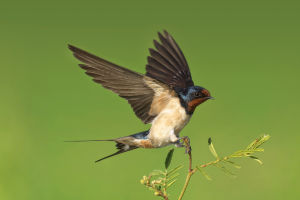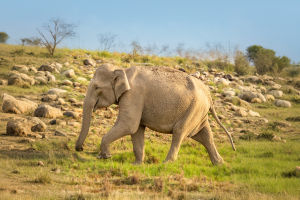Let’s dive into the wild and wonderful life of dragonflies! These fascinating creatures go through one of the most unique growth journeys in the insect world. Unlike butterflies, they don’t build cocoons or go through a pupal stage.
Instead, they transform straight from water-loving juveniles into agile flyers. Today, we’re going to explore their full life cycle — from egg to sky — and we’ll discover just how amazing nature can be!
Egg Stage: Tiny Lives Begin in Water, Plants, or Even Dry Soil
Dragonfly eggs are where it all starts. Depending on the species, female dragonflies lay their eggs in very different places. Some place them inside plant stems, others tuck them into rotting wood or even dry soil. A few species simply scatter their eggs on the water surface.
In temperate areas, these eggs often don't hatch right away. Instead, they enter a resting period called “diapause,” which helps them survive the cold winter months. But in warmer regions like Hong Kong, China, where winters are mild, this pause usually isn’t needed. Some dragonflies even lay eggs in dry soil, where the eggs can survive droughts until rain returns. Yellow dragonflies, for example, can hatch quickly after rain fills temporary puddles — giving them a speedy head start on life.
Nymph Stage: Life Underwater with No Wings in Sight
Once the eggs hatch, the baby dragonflies — called nymphs — begin their underwater life. Their very first phase lasts just a few seconds or minutes, during which they don’t even have legs. But after their first molt, they grow simple legs and three-segmented antennae.
This nymph stage is actually the longest part of a dragonfly’s life. They go through 8 to 15 growth stages (called instars), gradually getting larger. Even though they’re tiny predators in ponds or streams, they’re busy preparing for their final transformation.
As they approach adulthood, dragonfly nymphs stop eating and start changing inside. They remain in their old skin (exoskeleton), but inside, their bodies begin reshaping into adult form. We can even see the colors and patterns of their future wings starting to show through. This moment means they’re almost ready to leave the water behind.
The Magic of Molting: A Dragonfly Emerges
When the time is right, the nymph climbs out of the water, finds a safe spot (like a rock or reed), and begins its final molt. This process is called “emergence.” Slowly, the adult dragonfly breaks free from its old skin. Its wings and body are soft and pale at first, so it takes a few hours for them to harden and gain their final colors.
Most dragonflies choose to emerge during the early morning or evening to avoid predators while they’re vulnerable. If they bump into something during this stage, their wings may not expand properly, leading to deformities or even death. Timing and space are everything during emergence.
Seasons of Flight: When Can We See Them?
In colder regions, dragonflies only emerge in spring or summer. But in warmer regions's subtropical climates, they can be spotted almost all year round. Some dragonflies, called “spring species,” have peak emergence around late April or early May. These include certain stream-dwelling dragonflies like the robust-horned and needle-tailed spring species, which appear about two weeks earlier than others.
Some, like the smoky-winged damselflies, have a short flight season, while others can be seen flying from spring all the way to November. A few species, like the yellow dragonfly, fly year-round thanks to migrating populations — though it’s rare to spot them in January or February when winds blow from the wrong direction.
On the flip side, a few dragonflies don’t show up until late summer. The blue-striped species, for example, emerges much later than others. While most emergence peaks in spring, some continue into summer and fade out by autumn as temperatures drop.
So, What Makes Dragonflies So Special?
Dragonflies are nothing short of remarkable. Their ability to leap from underwater hunters to skilled fliers without a pupal stage is a rare trick in the insect world. From laying eggs in clever hiding spots to their synchronized springtime emergence, every part of their life is fine-tuned by nature.
The actual emergence from nymph to adult may take only an hour, but the preparation behind it lasts months — even years. Watching a dragonfly unfold its wings and take its first flight is truly one of nature’s little miracles.
Let’s Keep Exploring, Lykkers!
Nature has so many secrets, and the dragonfly’s life is just one of them. If you’ve ever watched one skim over a pond or rest on a leaf, now you know the journey it took to get there. Have you seen dragonflies where you live? Or maybe witnessed one emerging? We’d love to hear your stories! Drop us a comment and let’s keep this curiosity flying high together.


